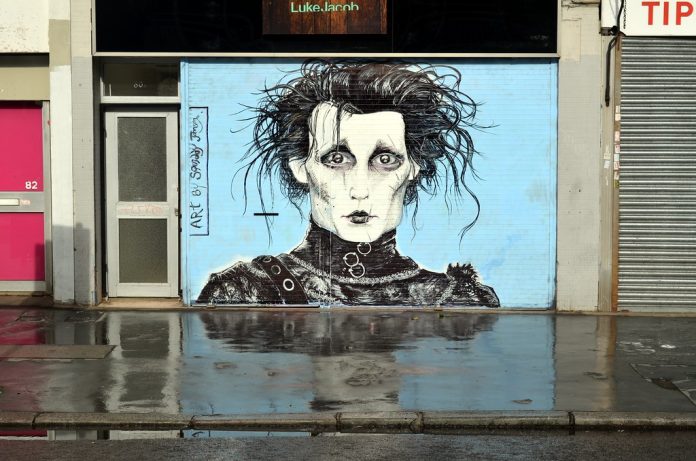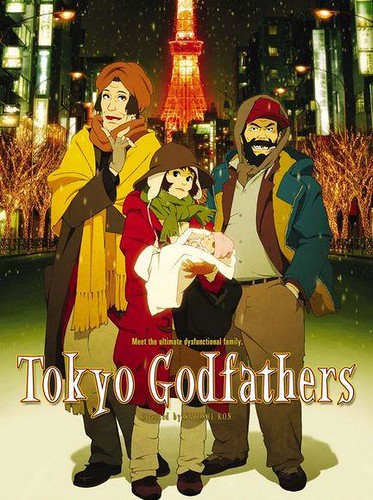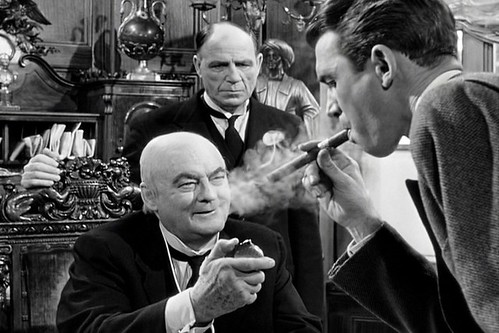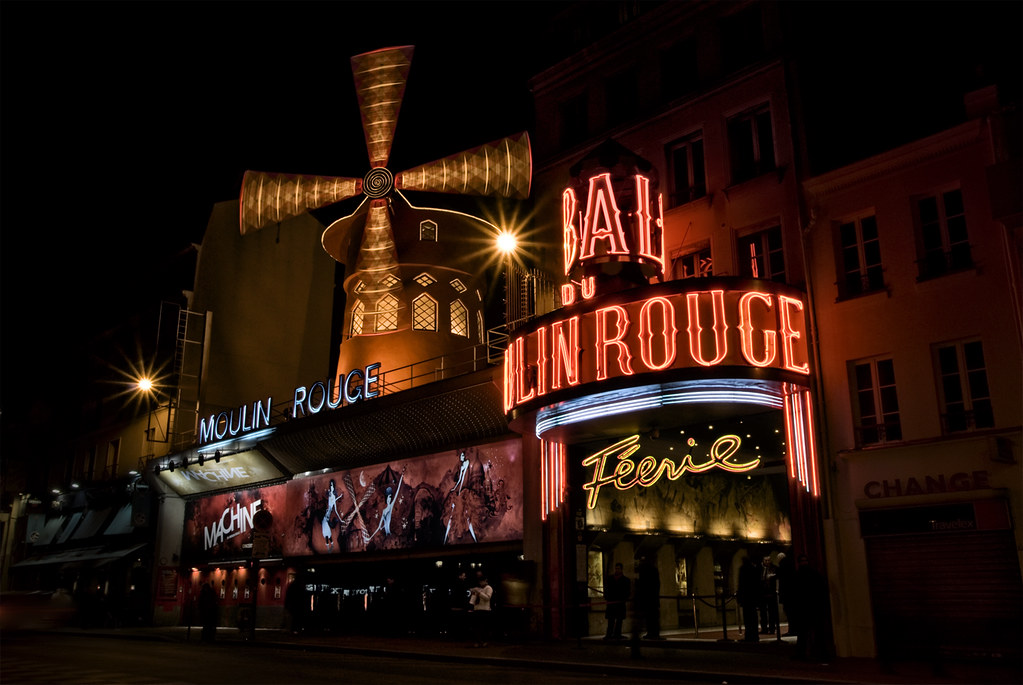
It’s been a year, and we’ve said some questionable things. As we draw to a close the grand national celebration of colonization and move to the next celebration of frosted capitalism, let’s keep in mind the true meaning of the holidays: movie watching! Seattle’s season of The Dark Wet means plenty of time to pull the blankets around and enjoy an evening of holiday cinema with the ones you love. You deserve it more than a mouthful of soap.
Just like all the seasonal traditions, Christmas movies come with expectations. Family, carols, redemption, and nutmeg. There’s also a few other tropes that touch on the experience of living in the city. So what happens if we consider a few holiday films in the light of our experience as promoters and appreciators of city living? What’s good fare for an urbanist holiday movie night?
The holidays are the perfect time to see urbanism at work. The private introspection of the new year, the solitude of winter, the dissociation after Thanksgiving gluttony. Match that with the season’s public ceremonies and festivals and family obligations. It’s a recipe for personal growth taking place on the most outgoing of festivals. What is Scrooge’s character arc but a private transformation played across his public appearances in the past, present, and future?
Except, we have to leave New York out of this. With movies like Miracle on 34th Street, New York’s role in filmmaking made its own holiday weather, conveniently creating Christmas tropes with the city as the (brightly lit, gently snowy) star. Manhattan in winter is a holiday crutch as simple and flimsy as Tiny Tim’s. The city itself is a shorthand for complexity and traveling there is the basis for a whole genre of finding oneself movies. Those are all great, but too often it’s just window dressing to make the actual story seem deeper than it is.
In reality, the full spectrum of the “holidays in New York” movies fall somewhere between Elf and Ghostbusters 2. Someone has arrived in The City! Watch their unique personality bounce off some gruff locals. Blue disposable coffee cups to show how “hard” the city is to crack. Cue a montage of a decorated Macy’s (or a stand in), then there’s a sing along, and someone’s covered in syrupy goo. The only question is whether the entering force is innocent or malevolent. The story is about someone learning the True Meaning of Christmas. The City is a cardboard set.
We can do so much better than New York at the holidays. Here are six urbanist holiday movies that get out of Manhattan and into some real seasonal feelings.

Tokyo Godfathers
This animated Japanese film features three people experiencing homelessness and the trials they go through when they find an abandoned baby in the days between Christmas and New Years. The three characters – a trans woman, an older man, and a teen girl – move in and out of each other’s orbit, but in ways that deepen their commitment to each other and finding the parents of the baby.
Winter Tokyo from the street level is softened by snow and confined by the need to escape from the cold. In Tokyo Godfathers, it’s also magical. Not magical in the Disney animated sparkles way. It’s the magic of social serendipity – encountering the people who need to be encountered – that’s only available in a place as dense and complex as Tokyo. It would be wrong to say that the city is a character in the movie because it’s darkened and covered in a blanket of snow. It’s that the connections of human Tokyo are awake and active even as built Tokyo dozes. And yes, there is a solid bit of honest holiday magic, but it’s well earned by the end of the movie.
Snowpiercer
Bleak beyond comprehension, the film Snowpiercer features a high-speed train perpetually moving around an Earth frozen by ill conceived climate tampering. The high speed train does not make it urbanist. The train society is rigidly divided by car, with opulence increasing and oppression decreasing as one moves from caboose to locomotive. It’s a look at how built form reinforces segregation at the most basic level. When the folks in the tail of the train start fighting back, it’s an uprising that will have everyone cheering for rational land use laws. (There’s also a few “I’ve got mine” reminders of what makes that difficult in real life.)
Not just a winter movie, Snowpiercer is a holiday movie because the uprising of the oppressed tail passengers happens on New Years Day. Or as much New Years as you can get, as they are celebrating the 18th anniversary of train’s launch with the most precious of treats for the whole train. Hard boiled eggs. The way the holiday is used against the residents of the tail is breathtakingly cynical and violent, which is a good antidote to other over-sweetened holiday fare.
A Christmas Story
A nostalgia bomb that we have in turn become nostalgic about, it’s easy to forget all the parts of A Christmas Story that revolve around celebrating the holidays in the city. Even if that city is Cleveland and Toronto standing in for the small town of Hammond, Indiana. There’s the parade and the Santa at the downtown department store. The ability to get a Peking duck for emergency Christmas dinner. The love/hate relationship between The Old Man and his car. And having the Bumpuses for neighbors.
And it’s a celebration of living in a community, even with Scott Farkus and his yellow eyes. Kids can walk to school. Parents phone when a kid rats out another for cursing. Yes, there is the pressure to conform, even on the parents. Would the leg lamp have met its demise if Ralphie’s mom hadn’t considered her block’s reaction to the soft glow of electric sex in her window? Probably, but it might have lasted longer.
It’s a Wonderful Life

The point of George Bailey’s journey in the Christmas classic It’s a Wonderful Life is about reinforcing his importance to the small town of Bedford Falls. (FINE, it’s in, upstate New York, but not The City) Contemplating suicide after a collapse of the Building and Loan he owns, the guardian angel Clarence shows George what the town would look like without him. Among George’s contributions is a modern housing development that’s pretty suburban, but 1000% better than the Pottersville slum that the town’s evil landlord would have built.
More than the climactic run down a snowy small town America Main Street, the movie sports the urbanist theme of social connection. George doesn’t feel like he makes much of an impression, except in his failures. But the marks he leaves on other people’s lives is indelible. The biggest connection is the movie itself. A rewatch reminds one how much this classic is embedded in Christmas.
Moulin Rouge

Yes, the movie announces it takes place in the summer of love (1899) and everything about its Paris setting is an absolute caricature. But every retelling of La Boheme is about the birth of the new, and how the final throes of the old are spent. End of the year and progressive urbanism, both for the price of one. Moulin Rouge is Baz Luhrmann fin-de-siecle bohemianism, using jukebox standards to push hard on beliefs of freedom, beauty, truth, and love. It’s a high order, and the first act of the movie lives up to it with sheer kinetic energy and joy and tuxedos. Then the story becomes ponderous, involving a love triangle tied up with theater construction and deed underwriting. By the time the color returns in the third act, you’re resigned to whatever pylon this boat is careening towards.
Which makes Moulin Rouge the absolute perfect allegory for going downtown to an expensive New Years Eve party – fancy clothes, a setting totally divorced from real life, and unattainable expectations for a good time. Successfully getting into the room you’d never go otherwise makes it feel like the Perfect New Years Eve Party is within reach. Then the open bar kicks in and you wake up the next morning with profound resolutions and a faint memory of someone explaining cryptocurrency using a meatball and a folding chair. That is late stage capitalist holidays as well as Moulin Rouge.
Edward Scissorhands
At its core, Edward Scissorhands is a wintery folktale about how the town got its snow. The often forgotten bookends feature Kim – Winona Ryder in heavy age makeup – explaining that the Tupperware colored suburbs never saw snow before Edward was rescued from the haunted house up the hill. The essential honesty of his tragic gothness was such a direct affront to the conformist ticky tack neighborhood that he was once again exiled. Now, in her old age, Kim looks at the snow and knows that Edward is safe, alone, and thinking of her.
Tim Burton movies are always about outsiders breaking down some accepted social norm. From Jack Skellington removing the walls between holidays to the live-action Dumbo, Burton movies are about artistes and passionate souls questioning rigidity. Like Burton himself. But rarely does he take aim at Suburbia with quite the bazooka he does in Edward Scissorhands. Ostensibly about snow, more about getting buried. Then throw in some Robert Smith hair and a Danny Elfman soundtrack, and it’s time for peak urbanist holiday movie viewing.
Ray Dubicki is a stay-at-home dad and parent-on-call for taking care of general school and neighborhood tasks around Ballard. This lets him see how urbanism works (or doesn’t) during the hours most people are locked in their office. He is an attorney and urbanist by training, with soup-to-nuts planning experience from code enforcement to university development to writing zoning ordinances. He enjoys using PowerPoint, but only because it’s no longer a weekly obligation.


